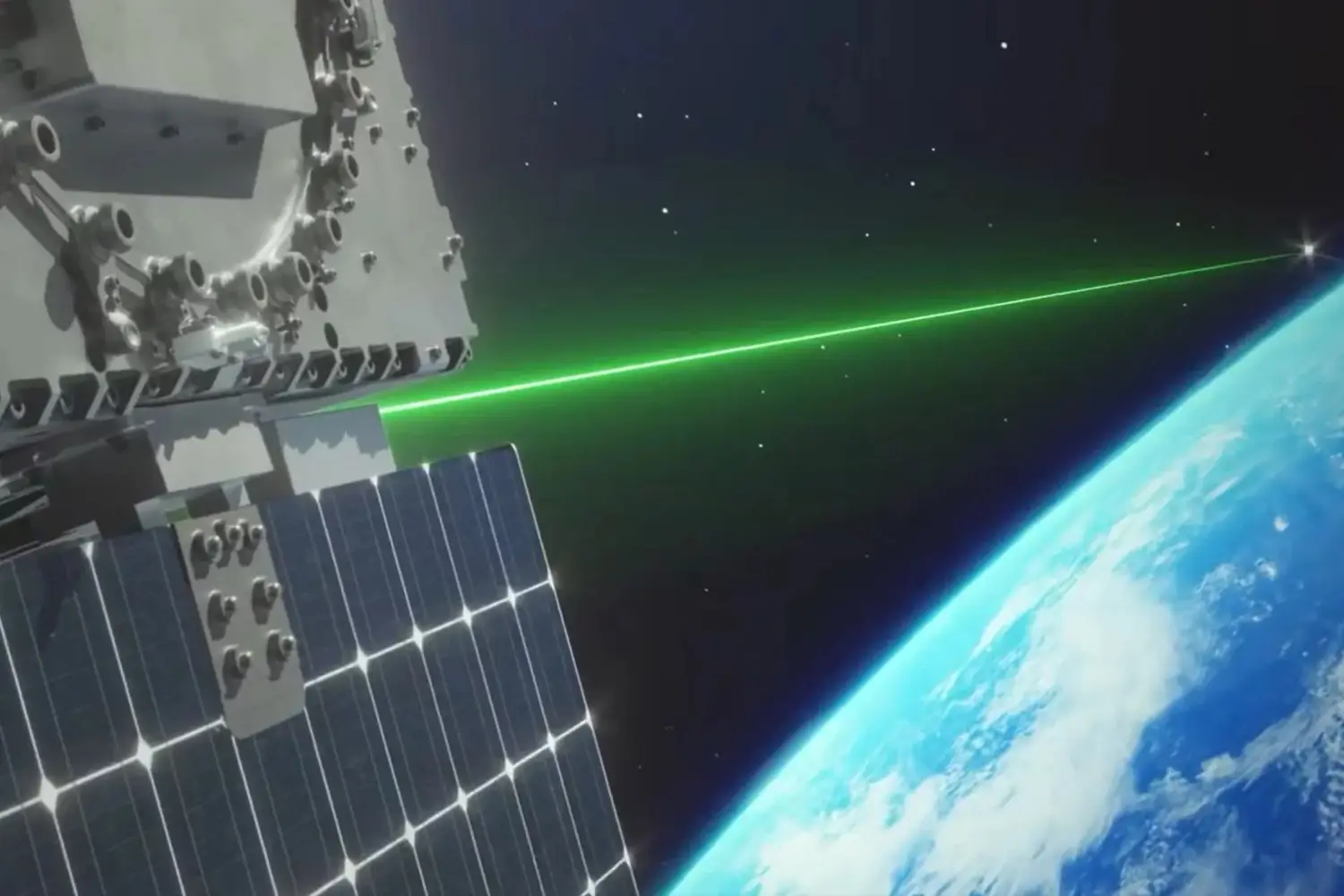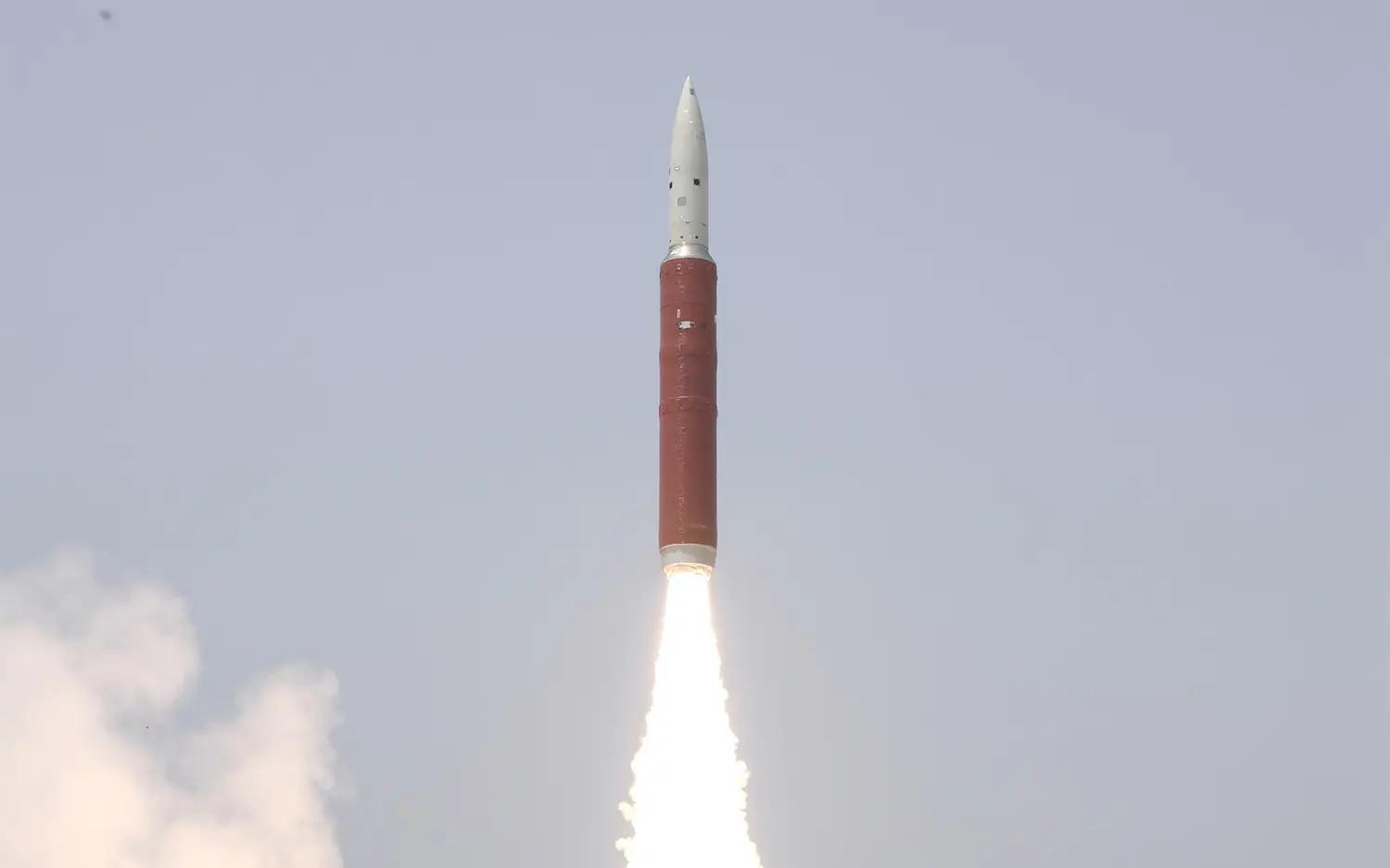
REPORT HOME > The Next Level
OCTOBER 2024 | technology report | SPACE
As concepts such as spacecraft capable of neutralising other satellites using grapplers or beam weapons, and a ‘space economy’ of orbital power plants and factories edge closer to reality, Shephard reviews the areas militaries must prioritise to prevail in this newly contested environment.
Above: France is considering the use of laser-equipped satellites to defend its space assets. (Image: Agence de l'innovation de défense)
In early 2022, Chinese satellite Shijian-21 (SJ-21) vanished from its slot in the geostationary ring 36,000km above the Earth, puzzling Western space traffic observers.
Even before this unexpected act, SJ-21, launched a few months earlier, had attracted the attention of experts. Soon after reaching its destination, the satellite appeared to have released another, smaller object, which then travelled in orbit alongside it. Then, in January 2022, SJ-21 began circling a nearby defunct navigation spacecraft from China’s Beidou constellation.
After its disappearance, dozens of Earth-based telescopes turned to search for the missing satellite, their data suggesting that it had, in fact, latched onto the old spacecraft it had been inspecting. California-based space awareness firm ExoAnalytic Solutions later said SJ-21 dragged the craft 3,000km away into a graveyard orbit above the geostationary ring, where it disposed of it and returned to its original spot.
China billed SJ-21’s mission as a clean-up demonstration, a commendable endeavour at a time of growing concerns over increasing amounts of dangerous debris cluttering near-Earth space. But Western security experts were less impressed. If China can ‘throw away’ its own satellite, it could, if it chose to, remove a spacecraft belonging to someone else with equal ease.
‘There's very little doubt in my mind that a system like this will suddenly become a high-threat system in a period of conflict,’ Clayton Swope, Top of Forma senior fellow in the International Security Program at the Center for Strategic and International Studies (CSIS) told Shephard.
‘We will see further development of systems that can grab and manoeuvre closely around other satellites. Those [grabber] satellites have dual uses, like most anything that happens in space. We will see those capabilities from many countries.’
Swope hints at a future, perhaps not so distant, where satellites fitted with robotic arms chase their opponents in orbit, ushering in a new era of space warfare, much more sophisticated than the jamming and spoofing of GPS and communication satellite signals that has become integral to current conflicts.
The US, too, is developing active debris removal technologies that could be turned into robotic satellite commandos. Northrop Grumman has performed two refuelling missions that involved autonomous docking with another spacecraft, while In Europe, Switzerland-based ClearSpace is building the ClearSpace-1 mission for the European Space Agency, which will attempt to remove from orbit a defunct sun-observing satellite in 2027.
Above: Manipulator technologies developed to refuel satellites or clear debris could also potentially be used to disrupt the orbits of other nations’ space vehicles. (Image: ClearSpace)
Elsewhere, Japan-headquartered Astroscale has made impressive strides with its debris removal technology. In August, its ADRAS-J spacecraft completed a close-up inspection of a discarded rocket stage. A follow-up mission is in the works to remove the space junk in 2027.
New warfare
But according to Nik Smith, regional director UK and Europe at Lockheed Martin Space, this progress may not be fast enough to keep up with China’s determination and pace of innovation.
‘I don't think that we have invested in our technology sectors in the same way, which means, when it does come to the next conflict, which could be in five to ten years, we may have great technology at the start, but it'll be depleted and obsolete by the time we get to year two or three,’ he told Shephard.
‘And if we haven't got the industrial base to respond, it becomes less around the technology specifically, and more around your ability to innovate at scale, at pace, to be able to keep up with that.’
This is not to say that the Western allies are ignoring the threats. France for example, is exploring a concept of ‘bodyguard’ satellites that could protect against such robot grabber attacks. To ward off these aggressors, the satellites would be fitted with a defensive weapon – a laser, microwave energy beam or its own robotic arm – to disable the approaching invader. Fleets of bodyguard satellites could be dispatched to guard costlier, strategic spacecraft and monitor adversary movements.
The idea received €6.5 million in funding from the European Defence Fund in May. Firms from Belgium, Denmark, France, Finland, Greece, Latvia, Luxembourg and Sweden are involved in the project, which could produce a demonstrator within three years. The French-led effort pioneers a new direction to space defence, which, according to Swope is very much needed.
‘The approach to date has been more one of developing more and more capabilities in space, complex systems that do support joint operations on Earth,’ Swope said. ‘But we need to start spending more money, thought and time on developing systems that can protect and defend against those new threats. It’s not enough to just be putting more capabilities in space, we need to balance that with a way to protect and defend them.’
Grabbers, lasers and directed microwave beams that could blind, disable and destroy enemy satellites without creating masses of out-of-control space debris will change how wars are fought in space.
In recent decades, access to satellite connectivity, Earth observation data and satellite-based GPS-based positioning, navigation and timing has become indispensable for Western militaries. Adversaries’ desire to deny access to those systems has grown in accordance with that dependence.
Above: India is one of several countries which claims to have successfully tested an anti-satellite missile system in recent years. (Photo: DRDO India)
Jamming of GPS, according to Swope, ‘happens around the world on a daily basis’ and has been an integral part of Russia’s strategy in the war against Ukraine. But the effects of jamming, spoofing and other cyber-attacks are temporary and require sustained effort by those carrying them out.
Rising stakes
More radical means of satellite destruction exist – China, Russia and India all showed they can shoot down orbiting spacecraft with anti-satellite missiles. Moscow, it has been claimed, is developing nuclear bombs that could be detonated in space. That threat is particularly worrisome.
When, in 1962, the US detonated a thermonuclear warhead 400km above the Earth (the altitude where the International Space Station orbits today) as part of its Starfish Prime experiment, the radiation created by the explosion destroyed or damaged about one-third of satellites in low Earth orbit at the time.
Admittedly, there were not that many satellites in place back then. Today, however, nearly 10,000 spacecraft operate in this range, including most Earth-observing spacecraft and SpaceX’s internet-beaming Starlink constellation.
Because of China’s expanding space programme, analysts do not think the east-Asian superpower would favour using weapons that cause lasting damage in the space environment. A sophisticated orbital arsenal such as robots and lasers would be the preferred solution in addition to continued jamming and cyber-attacks. Maintaining order in orbits, Swope thinks, will in the future depend on the ability of the US and China to find common ground.
‘If you look something like ten years into the future, you will see that all space activities are somehow tied either to the US or China,’ he said. ‘In a lot of ways, it’s the same as the situation between the US and the Soviet Union during the Cold War around the use of nuclear weapons. It was pointless for one side to have a unilateral decree. Ultimately, there was an alignment of interest that led to a number of arms control treaties between the US and the Soviet Union, and we need that kind of agreement with China around norms of behaviour in space.’
Just like the US and its Western allies, China has bold ambitions to expand its presence in space, which it describes as peaceful exploration and utilisation. To every kind of space vision, there is a Chinese answer: bases on the moon hosting crews of scientists, commercial space stations in low Earth orbit, space-based solar power plants beaming clean energy to cities on the Earth, orbiting factories developing innovative materials and assembling spacecraft directly in space. Each of these technologies, in addition to its peaceful purpose, could serve a military goal.
Above: Looking further out, the establishment of a future space economy would create unique defence challenges. (Image: Lockheed Martin)
‘Some nations could consider manufacturing munitions, weapons or military systems in space directly,’ said Lockheed Martin’s Smith. ‘Some people predict the use of the moon’s orbit to "hide" satellites for military use. So if you control all the resources on the moon and access to it, you will have a lot of influence.’
Smith conjures up a future where giant rockets like SpaceX’s Starship build up complex orbital infrastructure, where materials for use in space no longer need to be delivered from the Earth, where nuclear-powered spacecraft zoom from orbit to orbit, and refuelling depots ensure that high-value satellites remain in service for decades and space tugs never run out of fuel.
It’s a very different space world than the one we have known for decades. And although it might still seem more like science fiction, it is very much within reach.
‘The constraints at the moment are around the size of the system and the power you can generate,’ he said. ‘When you take those away, space becomes a far less constrained domain to operate in. [The adversaries] will be able to move where they want to and do what they want to. And you will have to try and deter that.’
The accelerating technology race, Smith thinks, will be less driven by the desire to explore than the need to keep an adversary’s use of space in check. And the stakes on both sides will increase with the value of their orbital real estate.
‘We're going to become even more dependent on space because of all these technologies and therefore you need to find a way of protecting them,’ he said. ‘If we don’t invest in space in the next five years to counter all these things, we’re out of the next conflict. We’ve got nothing to offer. That’s the reality of it.’



